Micromobility is here to stay, and it’s changing how we experience urban life for the better. With Unagi’s membership program, you can enjoy all the benefits of a top-tier electric scooter without the sky-high price of ownership or the inconvenience of ride-sharing.
Electric scooters are an integral part of the transport ecosystem and by far one of the most efficient first- and last-mile solutions. But with two main options on the table - scooter rentals and scooter membership - making the right choice can feel overwhelming.
Are you better off with the flexibility of renting, or does the predictability and perks of a membership suit your lifestyle more?
This article breaks down the pros and cons of each, helping you navigate through the buzz to find the best fit for your urban adventures. Let's dive in and explore which option truly stands out as the better choice for you.
Let’s get into it.
Scooter rentals
It’s right there in the name - scooter rentals refer to a service where riders can hire a scooter for a specified amount of time. Usually, a rider can rent out a scooter for a couple of minutes, all the way to weekly rentals.
The flexibility and convenience of being able to access a scooter for just the period you require has been instrumental in the widespread acceptance of electric scooters as a vital part of modern transportation.
That said, these programs are not available everywhere. The widest adoption has been in urban areas and prominent tourist destinations where short-distance travel is prevalent but difficult or expensive with existing traditional means of transport and where walking is an unnecessary hassle.
How do scooter rentals work?
Typically, scooter rental companies offer their services through apps, rental kiosks, or direct rental shops. There are plenty of companies offering the service today, including:
- Bird: They currently operate out of 100 cities spanning across North America, Europe, and the Middle East.
- Lime: Well known for their electric scooters, cars, mopeds, and bicycle rental services.
- Spin: The newest subsidiary of Ford Motor Company–they have a stronghold in about 19 cities across the United States.
- Wind Mobility: This European-based firm specializes in providing scooter rentals to private institutions, including hotels, campuses, businesses, etc.
- Bolt: You might know them from their ride-share services in the car space, but they also have their toes in the e-scooter rental market.
- Skip: They operate under what is known as a dockless rental service and are the brainchild of Boosted Boards.
- Scoot: Based in San Francisco, they are one of the three firms chosen as operators, alongside Bird and Lime, in the city under a pilot program by SFMTA.
- Goat: An Austin-based rental service that also operates under the dockless model.
- Circ: This Berlin-based rental firm used to go by the name Flash and is currently accessible in major cities in 7 European countries.
- Dott: Another European rental service that stands out with its vibrant-looking scooters
- Jump: They were acquired by Uber, and the rental service now benefits from the mother company's extensive resources and experience.
If you’re getting a scooter from a rental kiosk or a rental shop, they’ll have assistants on the ground who’ll ask for some form of identification, have you fill out standard paperwork, guide you on usage terms and fees, and address any other concerns you may have.
For first-time riders using the app, it’s as simple as:
- Download the app based on recommendations or research.
- Follow the registration prompts.
- Once you’re setup, search for a nearby electric scooter and make your way to the location.
- Scan the QR code or enter the vehicle ID to initiate the ride.
- The specific ride-sharing company determines the payment method and structure.
- Once you’re done with your ride, the app should guide you on where to park the electric scooter. If not, you’ll just have to locate a good parking spot.
- Remember to end the trip to avoid unnecessary charges.
How much does it cost to rent an electric scooter scooter?
The charges for renting an electric scooter vary based on a few factors, as listed below.
- The rental company
- The duration you’ll have the scooter
- The scooter model
- The city you’re renting in
We’ll now look at a few companies to establish an expected average when renting out an electric scooter.
Lime
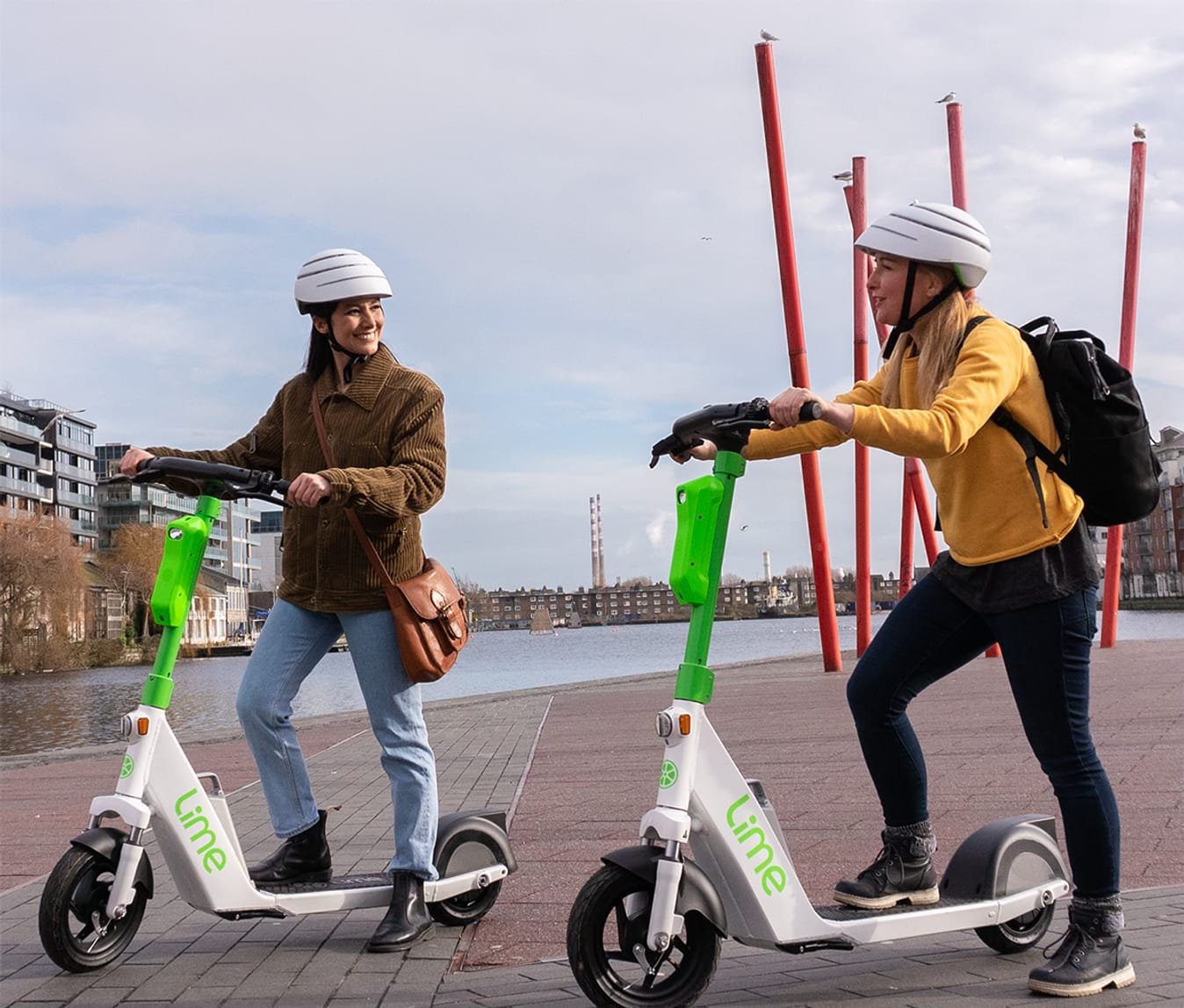
Renting a Lime electric scooter will come with a $1 unlocking fee. Once your trip has begun, the company charges an average fee of $0.30 per minute, which might be slightly higher or lower based on your location. Your cumulative total goes up as your time with the scooter increases; however, the charge per minute typically goes down to favor longer rides. In addition, they have a $280 option that gives you a month’s worth of rides.
Bird
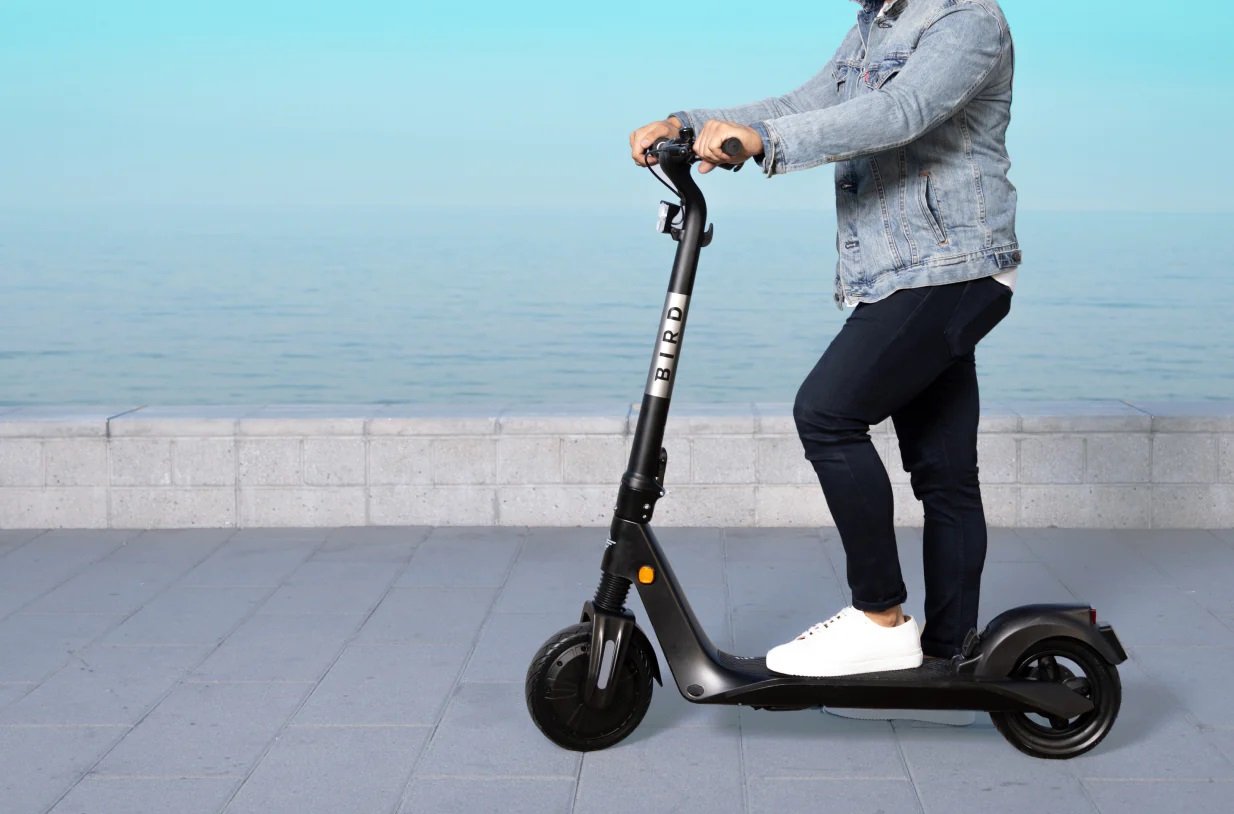
Again, depending on the city, Bird charges a fee of $0.15 to $0.33 per minute on top of the $1 unlock fee. For people renting the scooter for more than 2 hours, you will typically be charged a lower fee per minute, similar to Lime.
Spin

Spin charges $0.15 to $0.40 per minute after you’ve paid the standard $1 unlocking fee. Alternatively, you can sign up for the $59 standard monthly charge that lets you access different rides throughout the one month. However, note that if you’re operating outside of the monthly plan and fail to return the scooter within 48 hours, you incur a $25 charge.
Fancy Apple
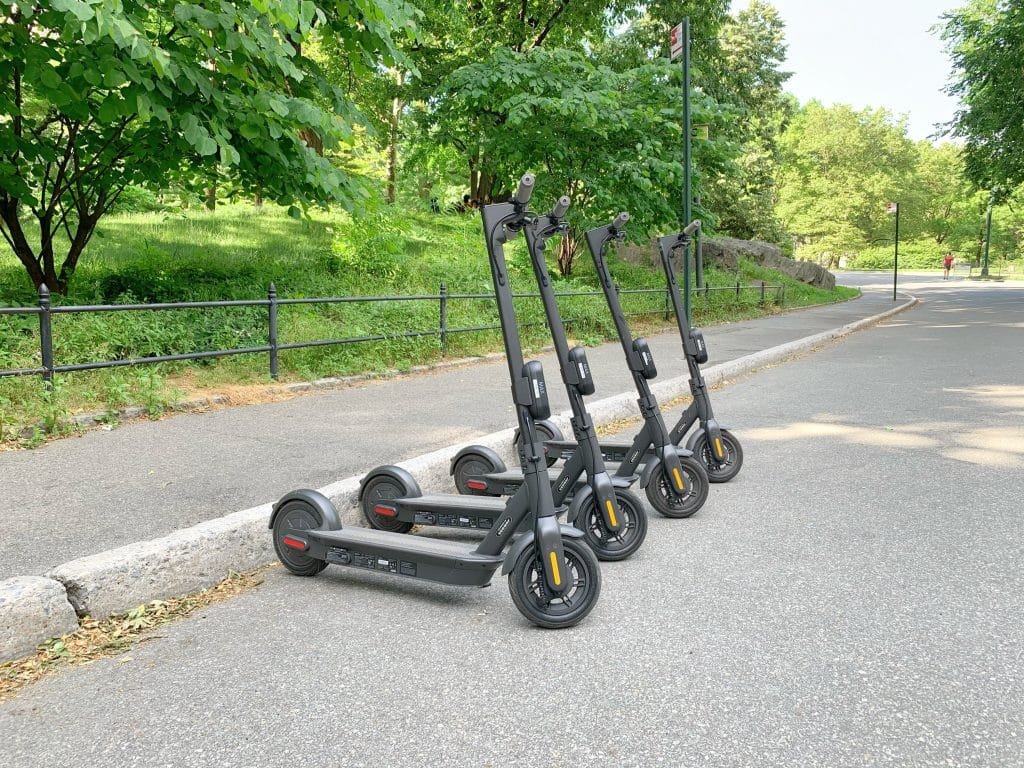
The NYC-based rental kiosk offers tourists and NYC residents the Segway Ninebot Max electric scooter on an hourly rental basis. You pay a standard fee of $34 for one hour, $48 for 2 hours, $68 for 4 hours, and $110 if you want the scooter for a full 24 hours.
Scooter membership
Electric scooter memberships or electric scooter subscription plans vary from ordinary rental programs in that you own the scooter for the duration of your subscription. This type of plan typically suits the daily commuter who’s unwilling to pay the upfront cost of purchasing a scooter or finds the daily hassle of renting inconvenient.
We’ll explore the benefits of scooter memberships, but first, let’s look at three prominent membership programs in the US.
Unagi

Unagi is credited for having introduced the membership style of renting scooters. Under the membership plan, you have access to their two one-of-a-kind scooters: the Unagi Model One Classic and the Unagi Voyager. The Model One Classic is a 12-mile, 20-mph, dual-motor, ultralightweight electric scooter, while the Voyager is a slightly more powerful, longer-range (25-mile) upgrade.
The Model One Classic is available for a monthly fee of $39, while the Voyager is available for $69 per month. For first-time customers, you’re required to pay a one-off setup fee of $50 which brings the initial cost of the Classic to $89 and $119 for the Voyager.
Levy
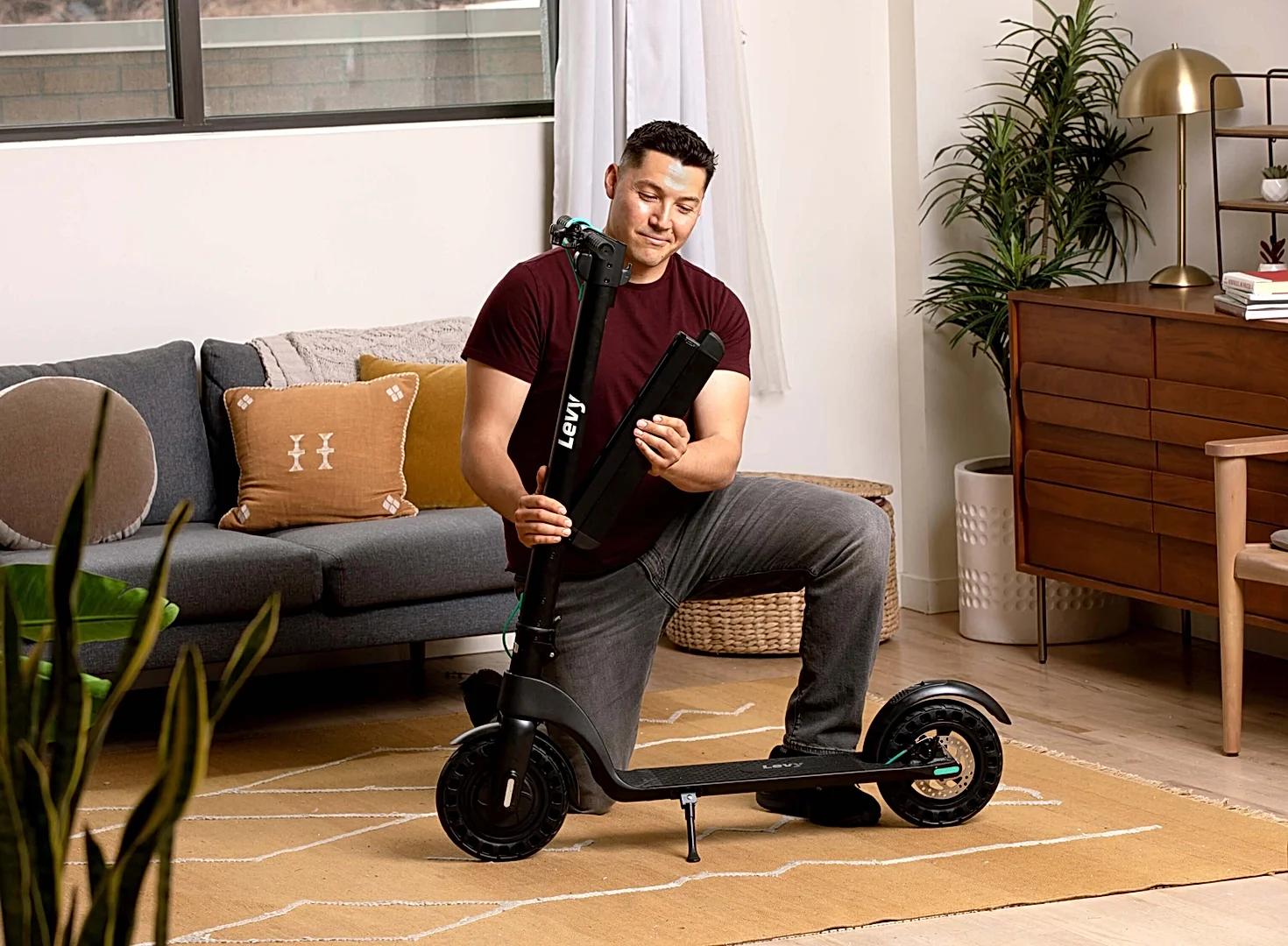
Levy has a hybrid rental program that allows riders to either rent the electric scooter by the hour or rent it under a monthly subscription. The rental program is available in 30+ cities across the US and Canada, with hourly rates varying by state. Athens, TN, enjoys the lowest rental rate of $10.20 per hour, while Jacksonville, NC, has the highest access fee at $37.20. Riders in competitive states like New York, Miami, and San Francisco enjoy a more standard fee of $15 per hour.
For the monthly membership fee, riders get to choose between Levy’s two models: the Levy Original, a 10-mile, 18-mph, 27 lbs electric scooter available for $70 monthly, and the 31 lbs Levy Plus, which goes 18 miles, has a top speed of 19 mph and is available for $90 a month.
Äike via Tempo

Äike is a European brand trying to penetrate the North American market, and they introduced their scooter subscription plan to the US through the e-mobility platform Tempo. The electric scooter can travel 25 miles on a single charge, has a maximum speed of 20 mph, and comes with a unique USB-C charging style. That said, the program is only initially available in San Francisco, with plans to (soon) roll it out to other cities, and you can access the Äike for a monthly fee starting at $75 a month.
Comparing the benefits of scooter rentals vs scooter membership: Which is better?
Electric scooters are popular for several reasons, above all their convenience as a first- and last-mile transport solution. However, when it comes to choosing between a rental service or membership model, there are many factors to consider. We will explore how they compare against each other and determine which is ultimately better.
Cost comparison
Scooter memberships are inherently cheaper than rentals, with offerings as low as $39 for the Unagi Model One Classic and as high as $90 for the Levy Plus e-scooter. For people who regularly commute, it is much more affordable and convenient to go with a monthly membership over the hourly charges on rental scooters that can rack up quite a fee.
For perspective, taking a rental electric scooter for about 20 minutes a day for a month will cost the following with three of our focus rental models:
- Bird scooters: A daily unlocking fee of $1 (30*1) plus a daily estimated fee of 15 cents (20*0.15*30), which would equate to $120
- Lime scooters: A daily unlocking fee of $1 (30*1) plus a standard $7 charge for a 20-minute ride (7*30), which totals $240
- Spin scooters: A daily unlocking fee of $1 (30*1) plus a daily estimated (max) fee of 40 cents (20*0.40*30), which would equate to $270
As a result, electric scooter rental models only make sense for people taking very infrequent scooter rides from month to month.
Accessibility

After completing the registration process with any of the subscription plans mentioned, you get the scooter delivered to your doorstep. Alternatively, with rental models, you have to actively search for a nearby e-scooter and make your way to it. Rental models have the added disadvantage that during rush hour, it’s sometimes impossible to find a free scooter, not to mention they are not available everywhere.
Convenience
With scooter subscription services, riders have full-time, unlimited access to their scooters. This electric scooter service mimics ownership; therefore, members don’t have to concern themselves with locating free electric scooters, daily payment plans, or moderating the amount of time spent in light of the costs associated. This makes the experience more appealing for regular commuters when compared to the hassles involved with renting.
Maintenance

Renters are quite reckless with rental scooters, as with all other things operating under this model, be it houses, cars, RVs, etc. This is one of the biggest pain points for rental companies, and it doesn’t help that they don’t conduct frequent repairs on their fleets. Therefore, getting a good rental scooter is entirely up to chance.
Membership, on the other hand, lets you own your electric scooter for the subscription period, which means you’re bound to be more responsible. Additionally, before sending out the scooter, a company like Unagi will conduct full maintenance and repair (if needed) ensuring that you have a roadworthy scooter from the onset.
Quality of the vehicle
Rental scooters have a very basic blueprint—without any bells and whistles. If you’re only interested in getting from point A to point B, then this works just fine. However, you get a little more from each of the three subscription plan e-scooters.
With Unagi, you get a high-quality design and the power of dual motors; the Äike is a fully weatherproof electric scooter that can uniquely be charged with a USB-C laptop charger; and with the Levy Plus, you get an e-scooter with a removable battery and a powerful braking system.
Parking hassle

With a personal commuter scooter, you have the leeway to carry your scooter with you indoors to your office or appointments if you can't find a secure parking spot. However, with shared scooters, you have to find a parking spot after ending your ride. This could take you out of your way to your final destination, which affects the efficiency of the scooter as a last-mile transport solution.
Ride quality
Since the manufacturers design rental electric scooters for short commutes, they do not prioritize ride comfort specifications. On the other hand, scooters under membership plans offer more in terms of ride quality. The Unagi’s solid construction with premium materials guarantees a confident, fatigue-free ride, while the Äike’s 10-inch tubeless tires guarantee a cushioned ride, as do the Levy Plus’ 10-inch pneumatics.
Sanitation concerns
Under a membership plan, you have full control over your personal vehicle. This means you get to clean your e-scooter as often as you want and limit the number of people coming into contact with it. Rental scooters, on the other hand, are accessible to a wide range of people. Usually, different riders’ sweat gets trapped in the grips and all manner of dirt could potentially lodge between the grooves on the rubbered mats on the deck. Therefore, riders might need to wipe down the bars or clean their hands thoroughly after use.
Improved riding skills

If you’re not a very confident rider, it’s easier to learn on an electric scooter subscription plan. With rental scooters, your time with the scooter is limited unless you’re willing to pay some extremely high fees. Alternatively, with a scooter on a plan, you have day and night access, meaning you can hone your skill to an expert level if you so wish. Membership scooters are the perfect prelude to ownership.
App features
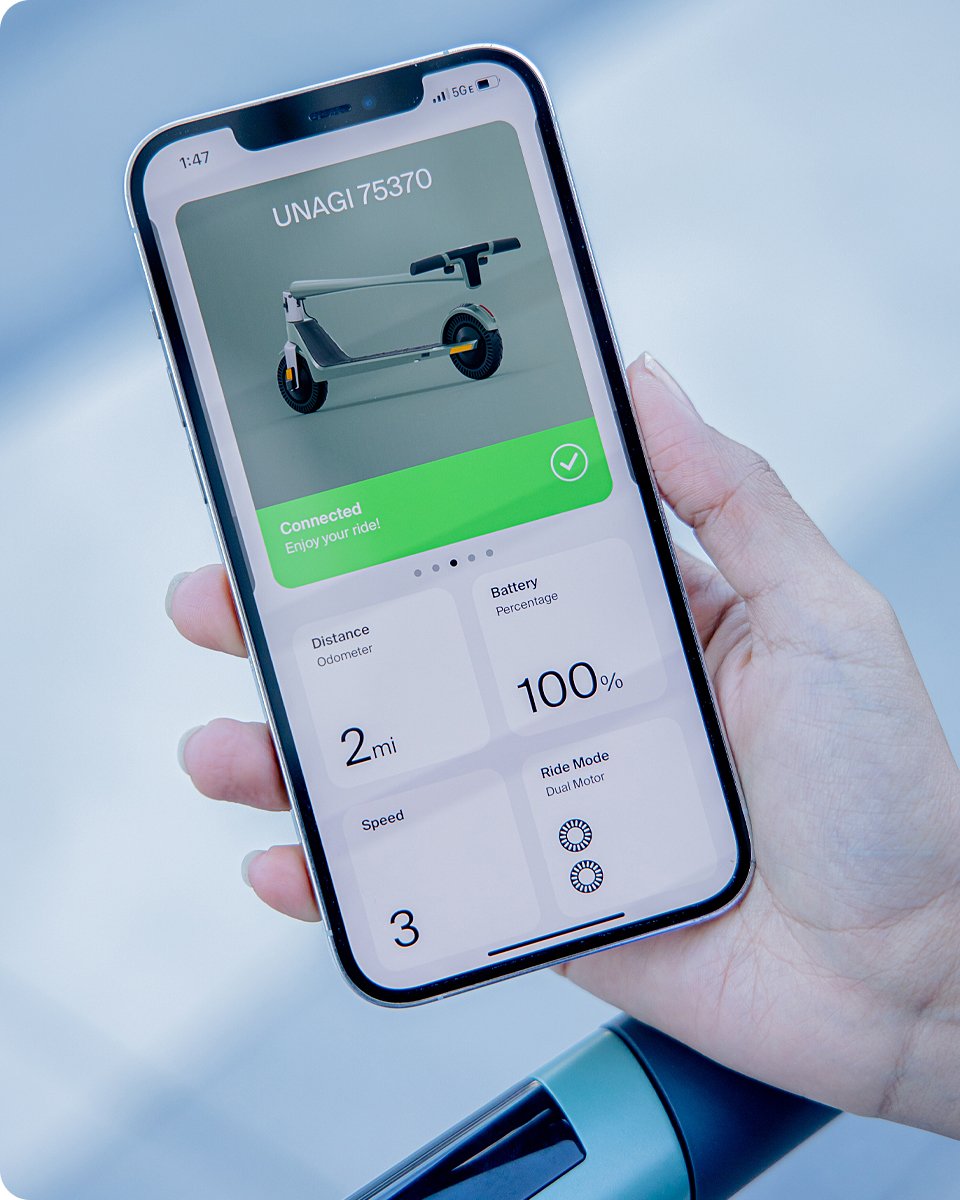
Rental models have basic app support that doesn’t allow much in the way of customization options. It’s also not feasible to keep track of your individual riding metrics since you’re constantly changing scooters. However, scooters under a membership plan give riders more control through the apps– and in-demand features like the range remaining counter on the Unagi and Levy apps and 24/7 GPS protection on Äike.
Conclusion: Which is better --scooter rentals vs. scooter membership?

Both rental and subscription plans have the inherent benefits of electric scooters as convenient, eco-friendly, last-mile transport solutions. However, as an alternative to ownership, a scooter subscription service beats scooter rental services by miles. For regular commuters not willing to pay the upfront cost of purchasing a good new e-scooter or beginner riders not ready to commit to scooting entirely, membership is the more economical and flexible first step.
In terms of vehicle quality and maintenance, you get more control and value for your money with a rent-to-own electric scooter. In addition, you are in charge of how clean your scooter is, how frequently you can ride, and where you park your membership-plan scooter.
With Unagi, you get the most affordable plan and a quality dual-motor electric scooter. Additionally, Unagi has a better support team, and riders get to be part of the scooting community. Not to mention, you get anti-theft insurance with your package, as well as the option to upgrade from the Model One Classic to the Voyager if you want a little more power.
That said, if your situation does not call for regular commuting or if riding an e-scooter is a once-in-a-while event for you, then renting electric scooters might make the most sense for you. It’s all quite relative to individual circumstances and you should do your due diligence before taking the plunge.

Stay current with the latest U.S. electric scooter laws in our 2025 guide. Updated annually since our first comprehensive guide, ensuring you have the most recent state and city regulations to ride responsibly”

The Slack Core 920R is currently the fastest electric scooter in 2025 that you can purchase without the need for pre-order.

Our selection of the best electric scooters 2025 spans the fastest e-scooters to the most portable ones, the ones designed for city riding and off-road, the best scooters for rain, budget electric scooters for students, and more powerful ones for skilled riders.

The Unagi Voyager is the best lightweight electric scooter for adults and teenagers. It is the ultraportable sequel to its predecessor, the Unagi Model One Classic.

If you're wondering whether an electric scooter with a seat is right for you, this is a detailed article that would suit your need.

Understand which personal electric vehicle is best, the choice between an electric bike or electric scooter might already be made for you by some critical factors, including portability and storage capacity.

In the U.S., most states don't require a license. For those that do, they usually just ask for a regular driver's license or a learner's permit.

Yes, you can bring an electric scooter on a plane, but it needs to have a lithium battery smaller than 100 watt-hours, which most don't.

Manufacturers advise against riding electric scooters in the rain. The main reasons are: water can fry the electronics, make the ride dangerous, and void your warranty.

The basis and the premise of my work is that we either operate out of love or we operate out of fear...Time is currency. The coolest thing about the scooters is that it's really quick, and it goes uphill. From there, traveling more efficiently and having a good time doing it--I think that's the most important thing.

Cynthia Leu has a full plate. A tech worker by day, Cynthia spends her off time balancing the parallel lives of a powerlifter, entrepreneur, mental health advocate, and more. Riding Unagi helps this USMC veteran cut down on everyday…

https://www.youtube.com/watch?v=7m2hVBE62LY Rasheed Muhammad is sick of Los Angeles traffic. In order to preserve his sanity, Rasheed has traded his everyday driving habit for the portable and beautiful Unagi Model One. It’s an essential accessory for navigating LA streets -- and…

Rich Lee, Co-Founder of San Francisco’s SPRO Coffee Lab, wants to share his love for coffee with the world. He depends on riding Unagi to avoid the hassle of navigating the parking crunch in the booming Mission Bay neighborhood.…












